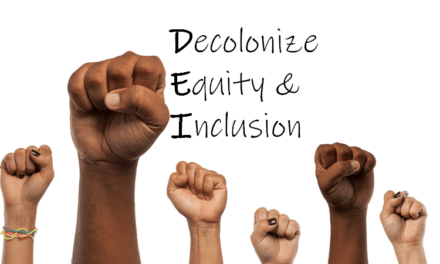
Throughout this series, we’ve been exploring the ways in which we can make equity and inclusion a little more “real” in our day to day practices and business functions. This week, we explore practices for approaching training and curriculum design with an inclusive mindset. As I reflected on my experiences working with clients and designing learning sessions, three areas came to mind: ensuring accessibility, considering different learning styles, and thinking like a learner.
Ensure Accessibility
As I’ve worked more with clients and individuals who serve populations with varying abilities, I’ve become more aware of the ways in which my privilege and lack of awareness around accessibility can (and has) shown in up how I design learning content and materials. Here are a few tactics I’ve learned along the way that can support you in designing learning materials that are inclusive and accessible to all:
I’ve become more aware of the ways in which my privilege and lack of awareness around accessibility can (and has) shown in up how I design learning content and materials. Share on X- Add alt text to all images and objects: Whether using WORD, PowerPoint, or another application to develop materials, it is important to include ‘alt text’ on all images. This makes it easier for individuals who use document or screen readers to experience the content.
- Use content placeholders, not text boxes: When using PowerPoint to develop content that will be sent to learners, use pre-defined layouts (or create layouts in Slide Master) instead of inserting text boxes. This ensures document/screen readers are able to access the text on your slides. One way to check this is to view your slides in “Outline View.” If the text/slide content appears, then it is accessible to readers. If not, learners may have issues accessing. It is generally best practice to send content ahead of time to those who are visually impaired and/or use document readers.
- Be cognizant of your color choices: Color schemes that are high contrast improve readability. A good way to test your designs is to print or preview in black & white.
- Include captions and audio descriptions: It is best practice to include closed captioning and audio descriptions whether it is requested or not. Closed captioning is beneficial to those with varying hearing abilities and should be a default in content that leverages multi-media.
Consider Different Learning Styles
Core to our approach to developing learning experiences is this notion of “meeting people where they are,” particularly taking into account one’s understanding and previous exposure to diversity, equity and inclusion topics. This also means being mindful that learners engage in different ways. Curriculum designers should:
“Meeting people where they are” also means being mindful that learners engage in different ways. Share on X- Balance Activity with Reflection Time: I have noticed that I have a strong bias towards activities that get participants moving and sharing openly. I have also become more aware that some learners prefer more time to reflect and/or process internally—particularly when exploring complex and nuanced topics. Striking a balance is an important consideration when designing session content and activities.
- Incorporate Discussion at Different Levels: Alternate between peer-to-peer (partner) sharing, table-talk, and larger group (popcorn-style) discussions to account for varying degree of trust and comfort sharing.
Think Like a Learner
This one is so critical, and a dynamic that I have become more attuned to of late. Naturally, when you work closely or have studied extensively a particular topic, it can be easy to assume that certain things are intuitive and/or undermine the complexity of the subject matter. Some have referred to this as an “expert blindspot” which refers to forgetting “that many of the things we now call knowledge were once counterintuitive ideas that had to be explored, tested, and put back together for a genuine understanding”. As curriculum designers (and even facilitators), it’s something to be mindful of. That said, learning and curriculum designers should:
- Simplify terminology: Consider simplifying academic “jargon” in ways that are accessible to people with different educational backgrounds. Use plain language when developing written learning materials and aids.
- Embrace your beginner’s mind: Tap into those feelings you often experience when learning a new topic, and ask yourself—What do/did I need? Use that as a startpoint and way to empathize with the perspective of the learner.
While this list is not intended to be exhaustive, perhaps it can serve as an impetus for identifying ways to be more intentional about inclusion in how we design and engage others in learning. Whether a teacher, curriculum designer, or learning & development professional, we all play a role in curating space for transformation and learning. Part of that involves making space for all.


















